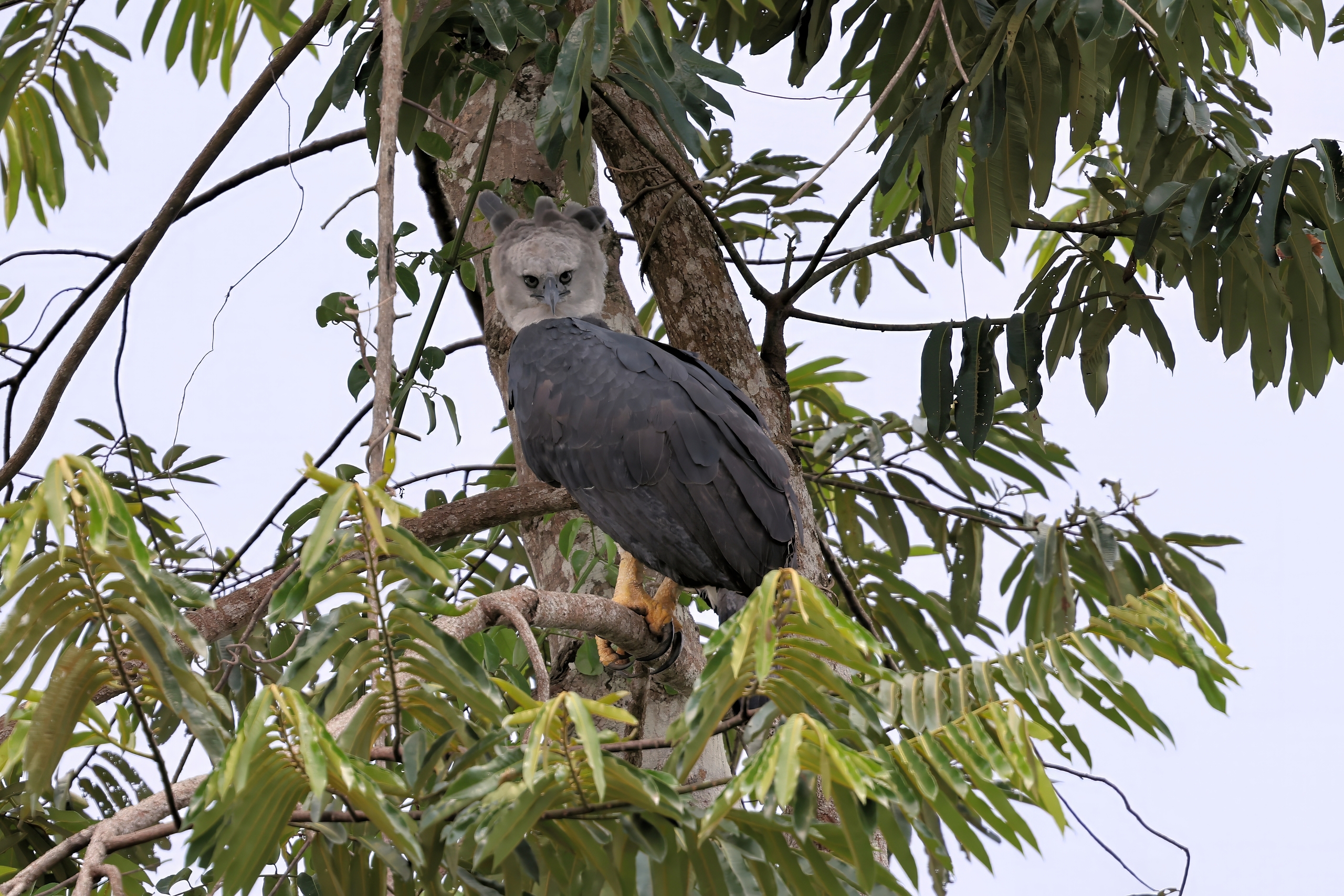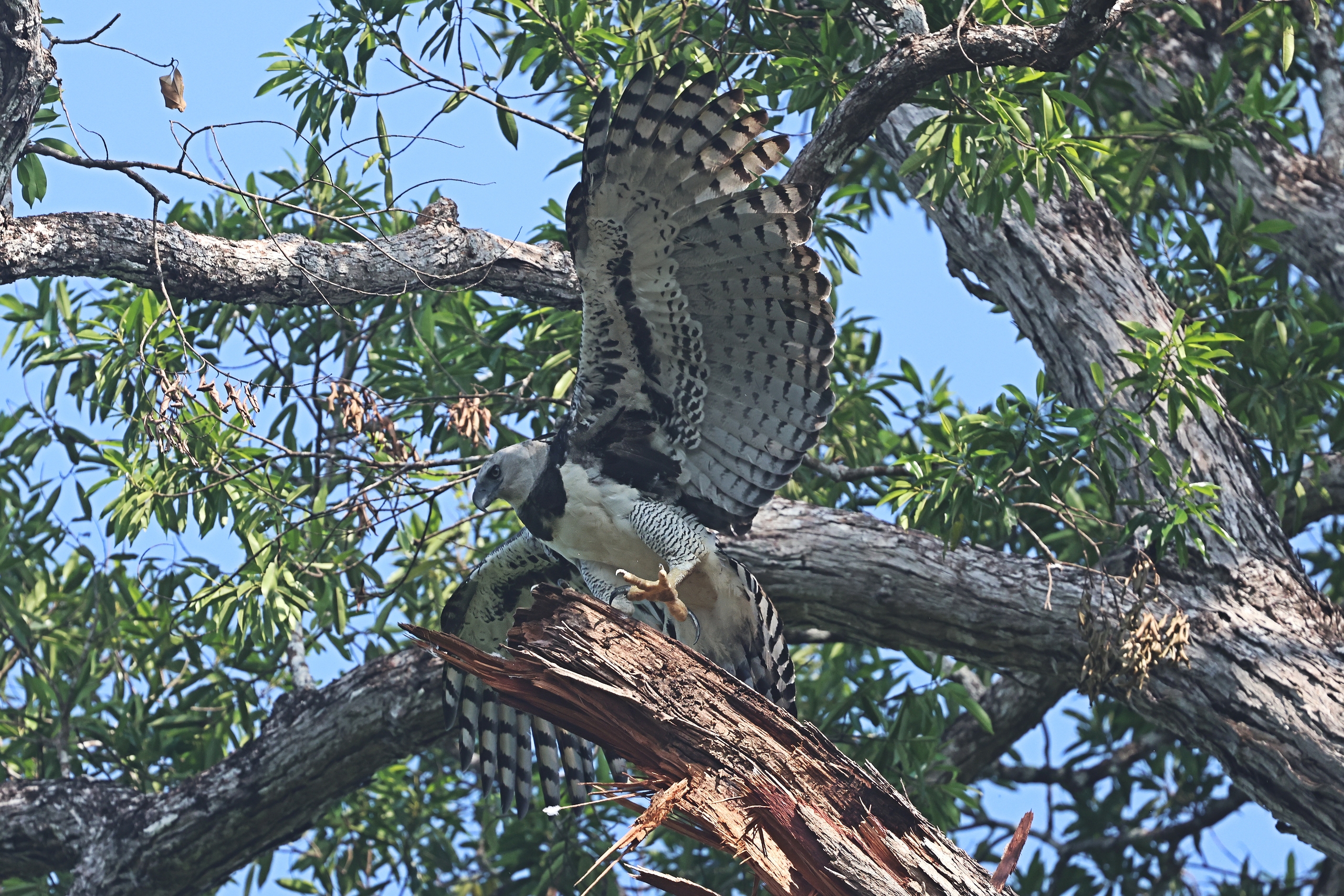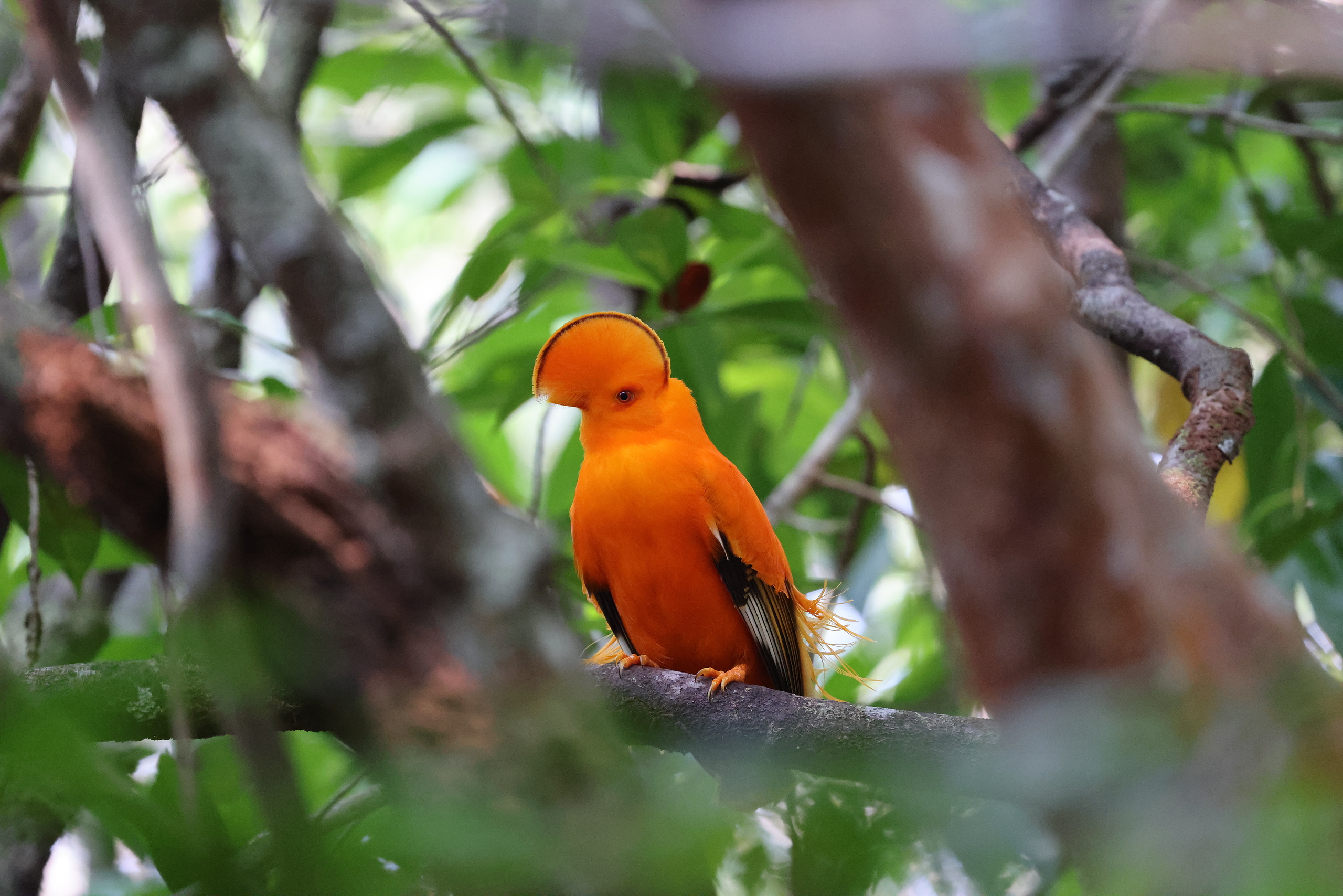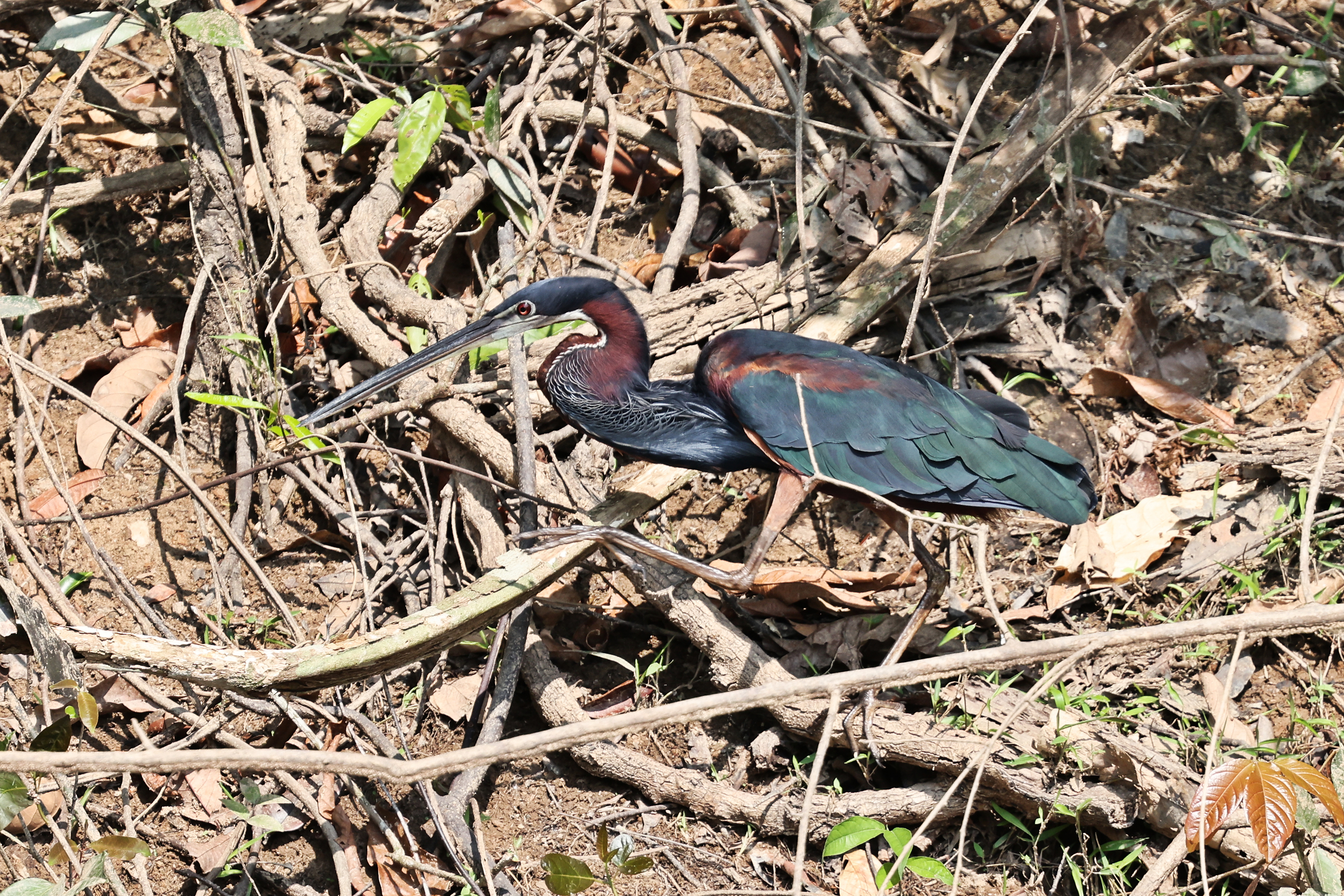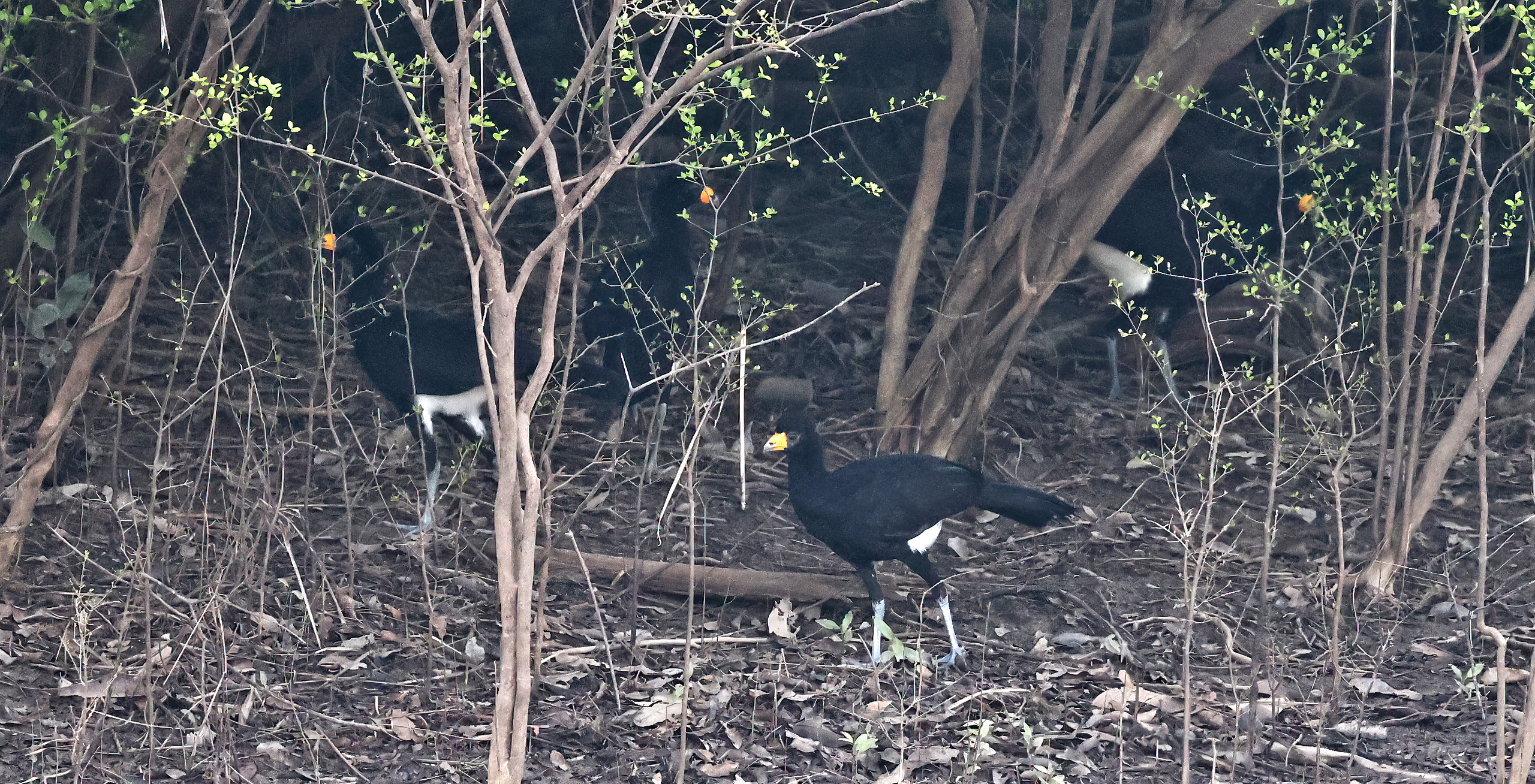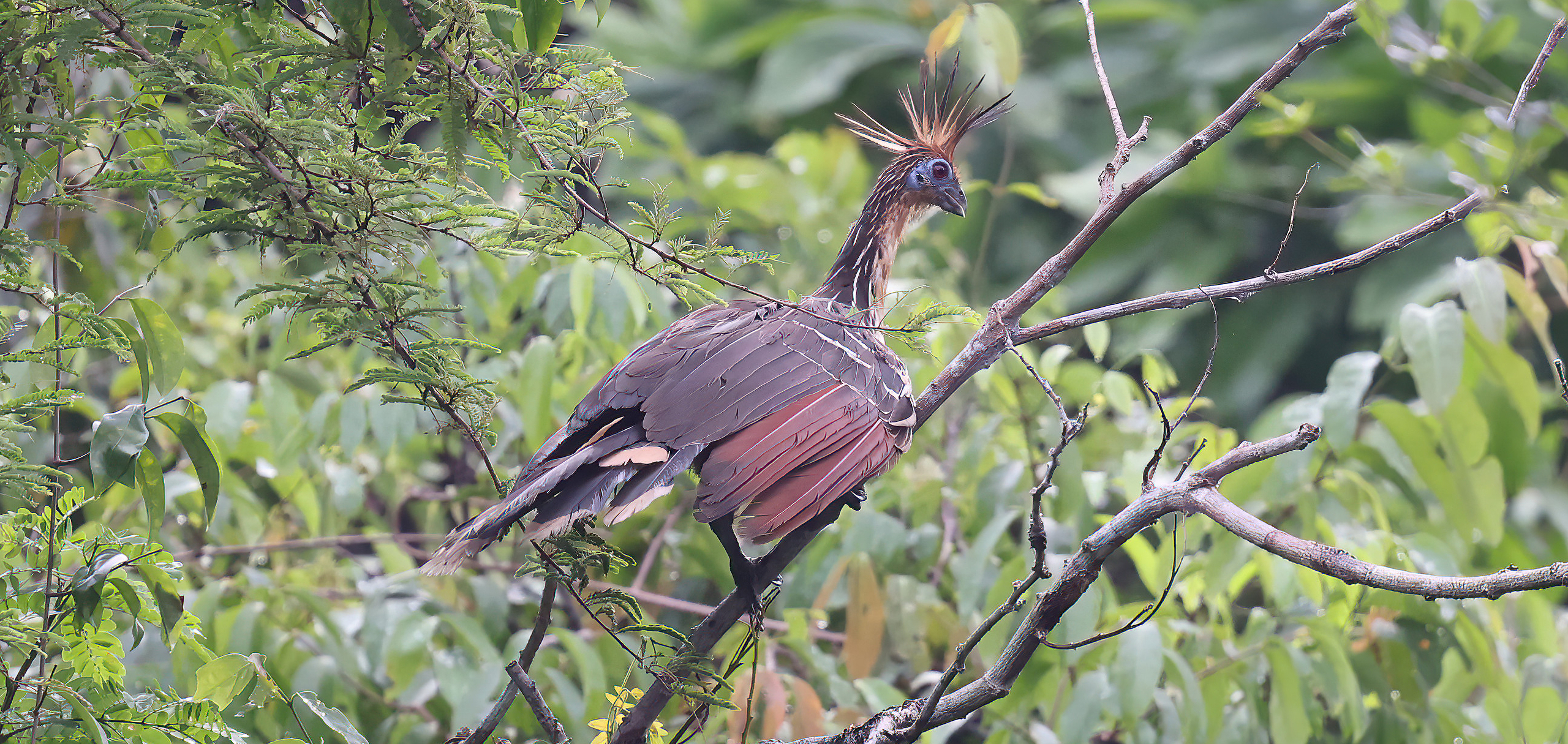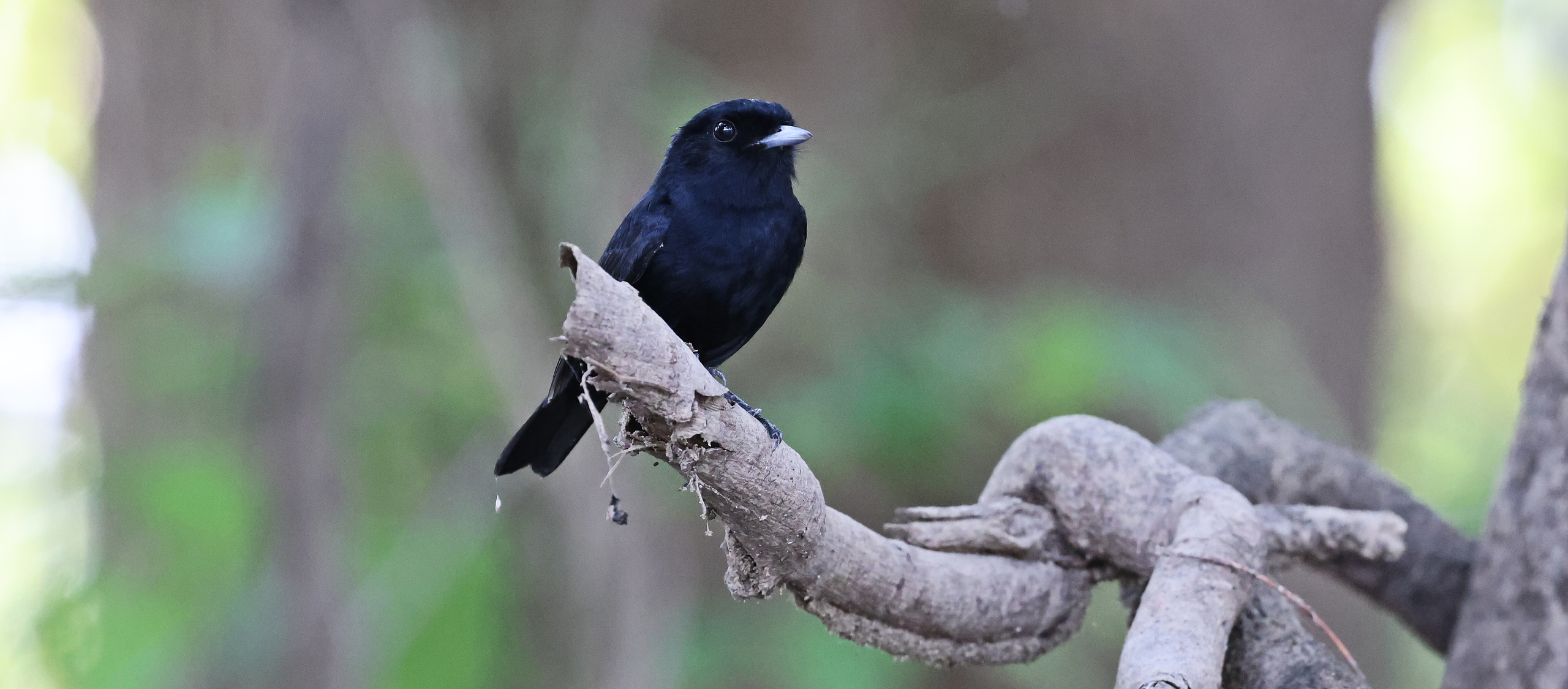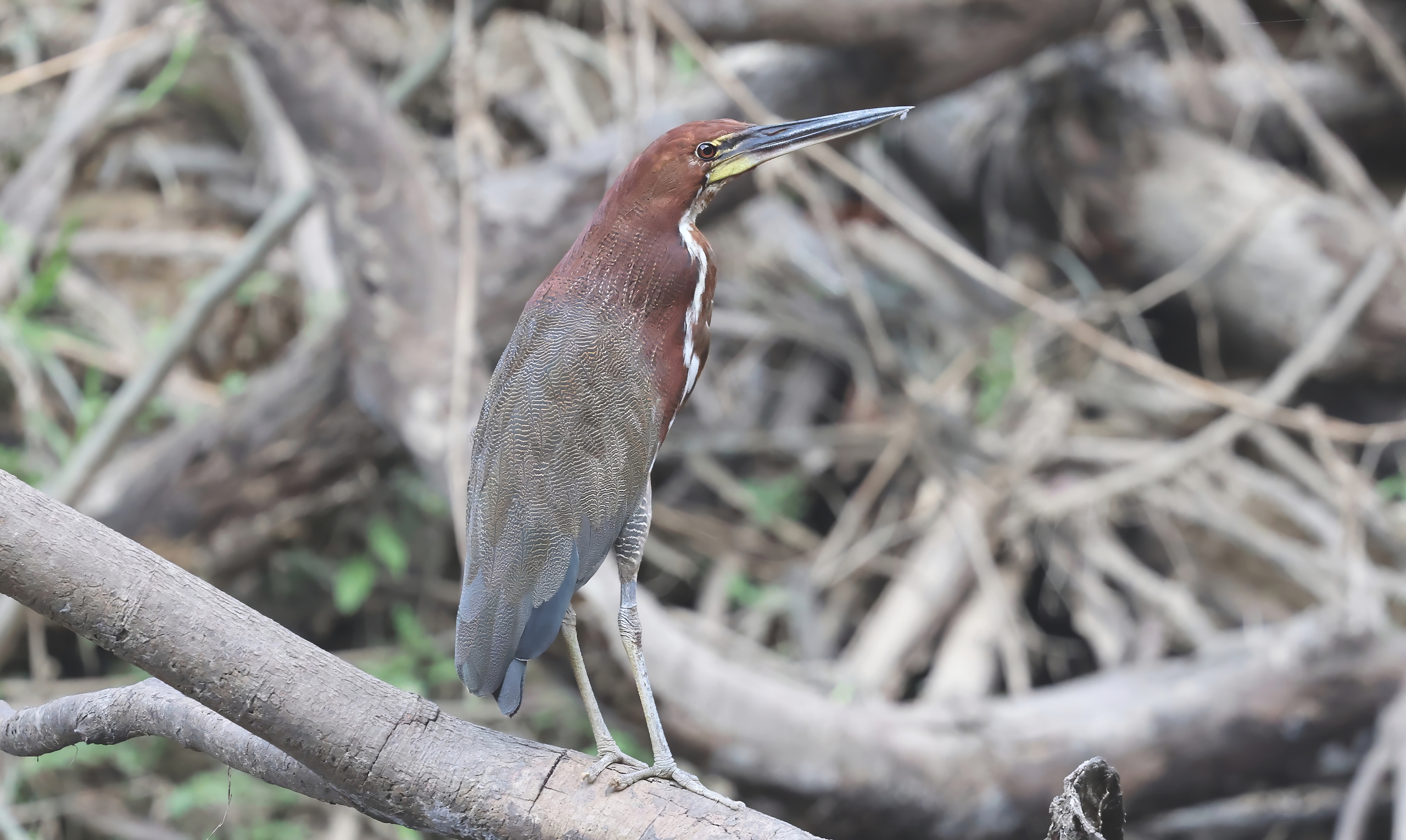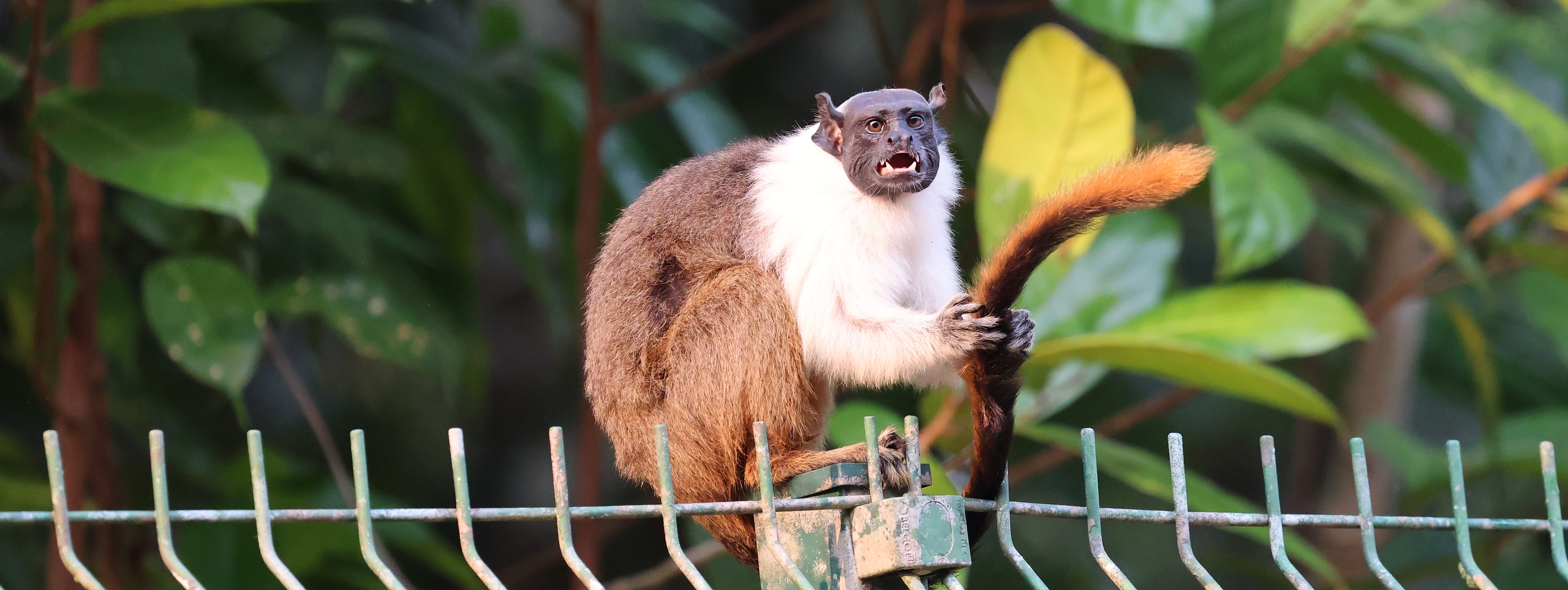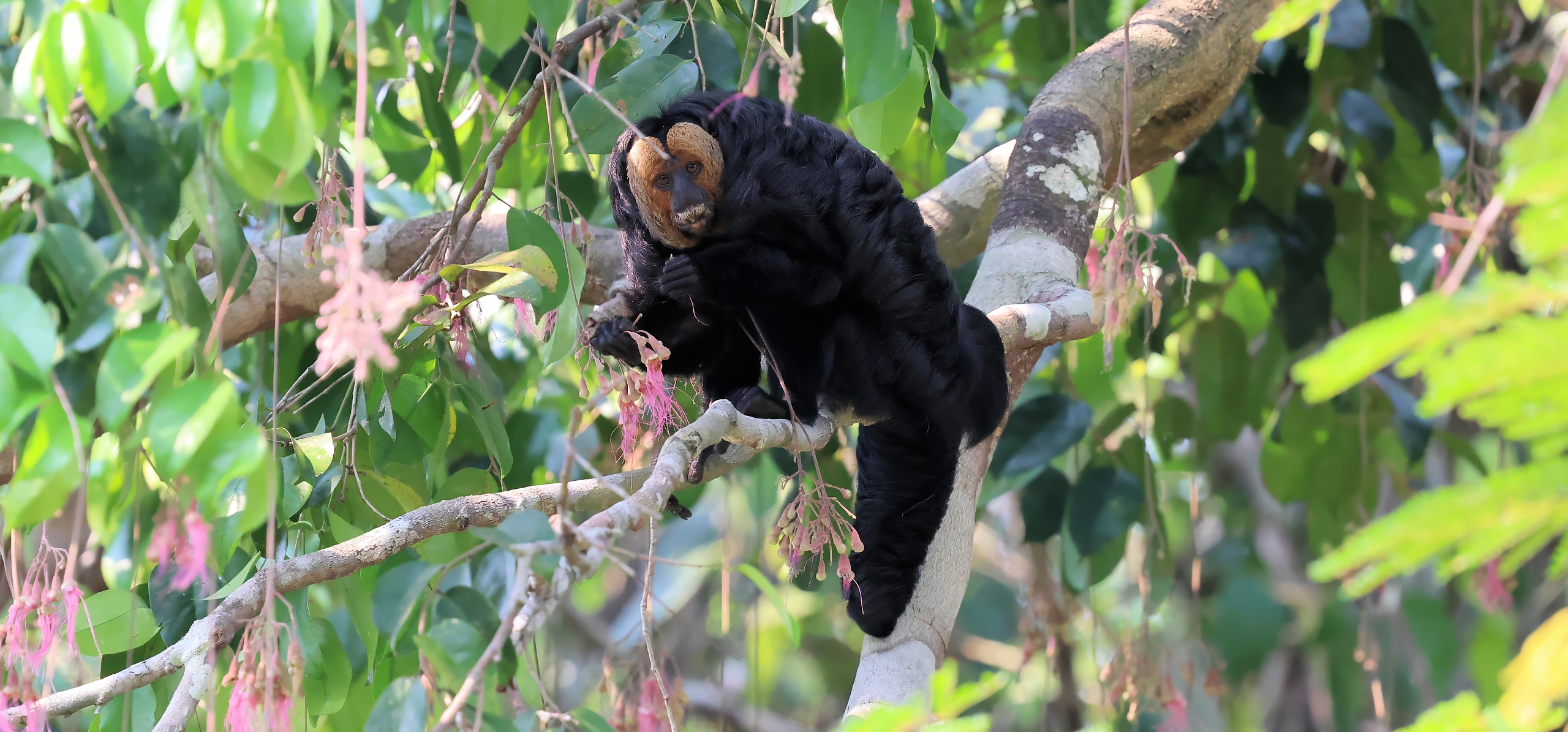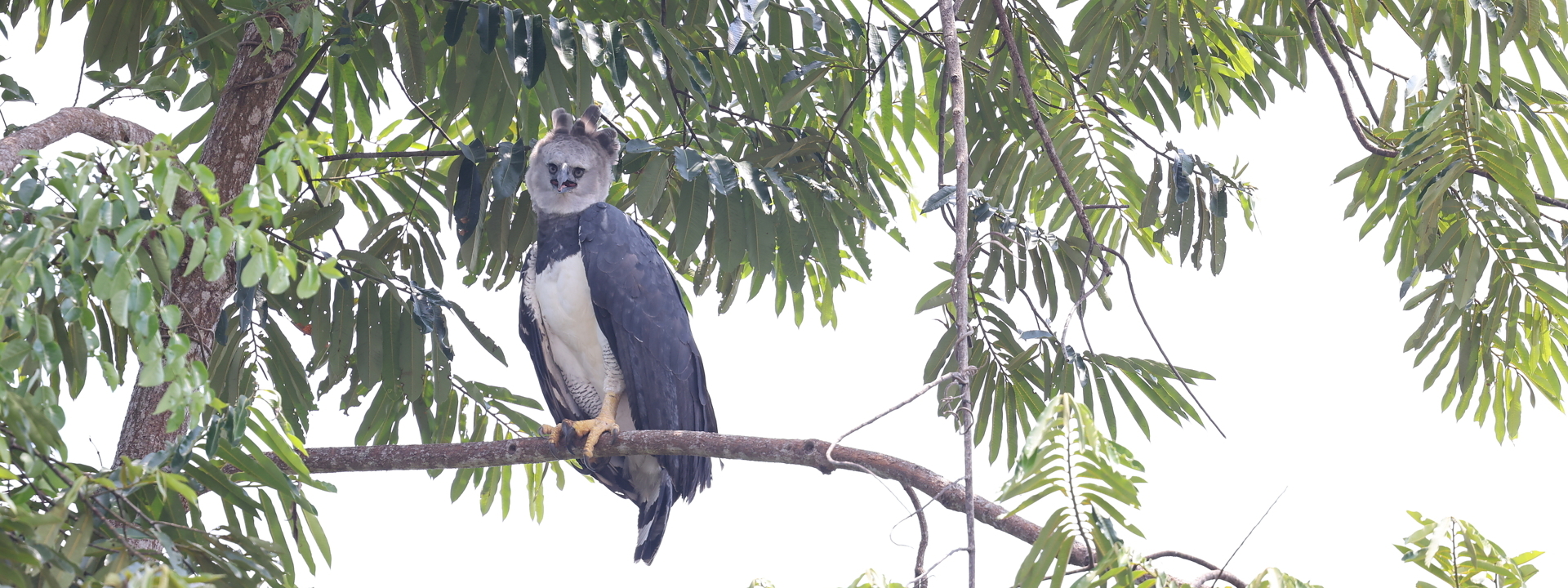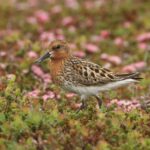25th Sep 2024
Remote Amazon Report
The joint WildWings/Limosa birds and wildlife cruise to the Brazilian Amazon concluded recently and the trip was a spectacular success with an impressive selection of species being seen.
For many of the group, the major highlight was having exceptionally good views of two separate Harpy Eagles with an adult (plus a 2-3 month old chick) at a recently discovered nest on the extension and then another fine adult as our riverboat, Iracema, cruised back down the Rio Negro in the latter stages of the holiday.
The tour started with a short extension to a simple but comfortable lodge not far from the town of Presidente Figueiredo where the main goal was to visit a Guianan Cock-of-the-Rock lek. With over a dozen males enjoyed at a matter of metres range, this objective was certainly achieved and we had the added bonus of a male Guianan Red Cotinga which showed regularly over the three days we were at the lodge. With Spangled Cotinga and Crimson Topaz amongst the other species seen, the extension was an unqualified success.
Our time aboard Iracema also went well with most of the period spent on the Rio Negro and some of its tributaries including the Jau and Branco rivers with a great range of desirable birds being seen. These included Hoatzin, Spectacled Owl, Agami Heron, Sunbittern, Sungrebe, Blue-and-yellow Macaw, Wire-tailed Manakin and Capuchinbird.
We also spent a percentage of our time looking for some of the range and habitat-restricted species which can be found in this region and those seen included Cherrie’s and Klages’s Antwrens and Parker’s Spinetail.
The biggest surprise, however, was finding Rio Branco Antbird which is currently treated as ‘critically endangered’ by Birdlife International. It seems this species may not have been recorded along the lower part of the Rio Branco for at least a decade and our sightings suggest that the current status may be overly pessimistic given there seems to be plenty of undisturbed habitat between the area where we saw it and where it is regularly found about 250 miles to the north.
The trip was, however, not just about birds and we also made a special effort to look for mammals. Ten species of monkeys were seen (extension plus the main tour), as well as some nice views of Giant River Otter, both Northern Black-eared and Grey Four-eyed Opossums and a range of forest rats, however, the rarest species was undoubtedly a Black-tailed Porcupine, a species which is only very occasionally recorded in this region as it seems to be genuinely uncommon.
Arguably the primate highlight was the Spix’s Night Monkeys we saw at the tree where they sleep, but we also enjoyed good views of Golden-faced and Guianan Bearded Sakis, Humboldt’s and Guianan Squirrel Monkeys, Pied Tamarins and (Guianan) Brown and Humboldt’s White-faced Capuchins.
To read the full trip report and systematic list please click here and to view details of the 2025 departure, please click here.
